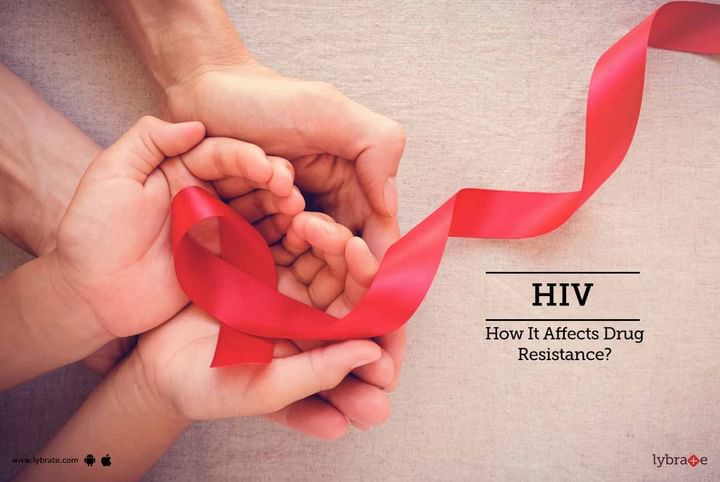HIV - How It Affects Drug Resistance?
HIV infection is the causative factor of the acquired immune deficiency syndrome (AIDS). Worldwide research is being conducted and treatment strategies are being formulated to combat this fatal disease. Fighting HIV is not an easy task, since the disease cannot be completely reversed. However, worldwide use of anti-retroviral therapy has helped in controlling the spread and transmission of disease. Use of medications, regular screening and close contact with caregivers and physicians is necessary for proper management of the disease. Despite, available treatment options, a difficult obstacle that arises before or during the treatment is drug resistance.
Drugs are aimed at targeting the disease-causing pathogens like bacteria and viruses. These pathogens, over a period of time, develop the ability to acquire resistance against the targeted drugs. The pathogens continue multiplying despite the presence of the drug in the system. In today’s scenario, the potent drug combination of anti-retroviral therapy (ARV) has been successful in remarkably reducing HIV-related mortality. However, an increased emergence of resistance to the drug therapy is concerning.
Amongst the various drug classes available in the ARV, no drug is resistance-proof. The drugs belonging to the same class have a similar mechanism of action against the virus. So resistance developed against a particular class of drug inevitably leads to resistance against all the other drugs belonging to that class. An individual with HIV infection may have one or more drug-resistant mutations, which makes the person less sensitive to one or more anti-retroviral drugs. When the replication of virus in the system is not suppressed fully, a resistance towards it develops.
Non-compliance of the ARV results in resistance. Resistant viruses can spread the infection and affect ARV therapy. Drug resistance is usually attributed to inadequate adherence to the regimen. But in some cases, strict adherence to the drug is seen, yet there is a presence of resistance due to poor absorption. This implies that since the drug is not getting adequately absorbed in the body, it is unable to prevent the replication thus leading to drug resistance.
Anti-retroviral treatment is aimed at limiting the replication of HIV in the body. Various drug classes target different steps of replication, which stops further replicating and infecting of the cells. The nucleo-capsid contains viral genome and three enzymes vital to HIV life cycle:
- Reverse transcriptase - Transcribes viral RNA genome into complementary deoxyribonucleic acid (DNA)
- Integrase - Facilitates incorporation of pro-viral DNA into host cell genome
- Protease - Cleaves viral polypeptide into individual functional enzymes
Drugs targeted on these steps are as follows
- Nucleoside and non-nucleoside reverse transcriptase inhibitors like Nevirapine and Efavirenz act on the reverse transcriptase enzyme.
- Integrase inhibitor Raltegravir acts on the Integrase enzyme.
- Protease inhibitors like Ritonavir, Indinavir, Saquinavir act on the Protease enzyme.
- Fusion inhibitor Enfuvirtide acts to prevent fusion of HIV with cell membranes.
- CCR5 inhibitor Maraviroc block the CCR5 co-receptor.
- A viral mutation occurring at any stage of this process can affect the efficacy of the drug therapy.
The emergence of drug resistance can be managed by evaluation of drug absorption and ensure strict adherence to the drug schedule. Genotype tests can be done to look for drug-resistant mutations in genes. Phenotype tests are done for measuring the ability of a virus in an individual to undergo replication in different drug concentrations. A successfully administered and effectively acted first-line drug treatment, preferably a 3-drug combination, reduces the chances of drug resistance in future.
In case you have a concern or query you can always consult an expert & get answers to your questions!



+1.svg)
